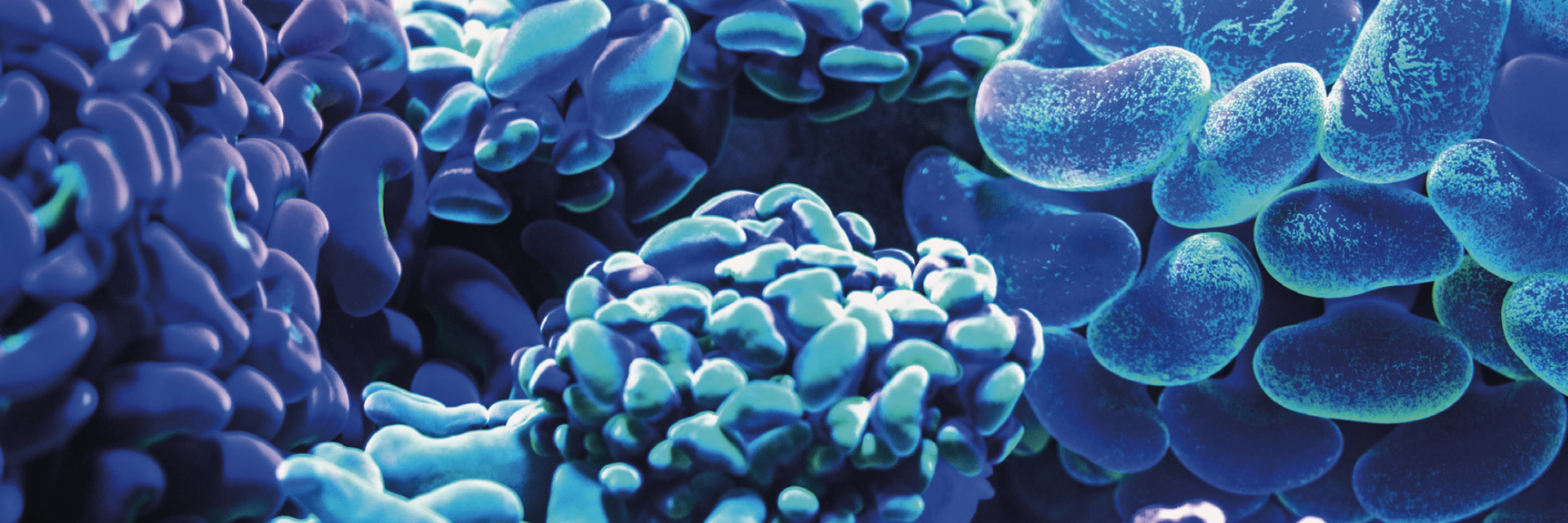Research
Collective intelligence in neuroscience? Neuropsychologist Martina Ardizzi takes us
on a journey to explore the main feature of the human brain: cooperation in groups for collective improvement and success.
As human beings, our prospects for survival are closely linked to our social aptitude, enabling us to live in groups and anchor ourselves to highly complex and elaborate life-styles in society. Indeed, one of our most distinctive human traits is our ability to identify and cooperate in groups and leverage this ability for collective improvement and success. Awareness of this collective human temperament is certainly not recent, explaining the vast interest of various disciplines in the collective nature of processes and functions expressed at individual and collective levels. Collective behaviors and collective or group intelligence have long been discussed and studied in this framework.
Ethological studies reveal that the evolution of collective intelligence can be traced to our bacterial ancestors as far back as 1 billion years ago. In the animal kingdom, ant societies show greater intelligence than any other animal except humans (Bloom, 2000). Human psychology has explored group dynamics over several decades, attempting to understand what makes teams successful, and predicting team success has remained an area of ongoing research for scientists and industry leaders. To give an idea of the extent of interest in this topic, the tech giant Google has invested millions of dollars in an initiative – named Project Aristotle – to study hundreds of Google teams and figure out why some struggled to perform while others soared. Unfortunately, they were unable to find any evident patterns (Duhigg, 2016). Furthermore, the
report published by the National Academy of Sciences focused on strategies to enhance the effectiveness of collaborative research in science teams (Cooke and Hilton, 2015), has been one of the most downloaded in history.
The field of neuroscience has also recently joined this large group of stakeholders. Neuroscientists have recently emphasized the importance of studying how multiple brains interact with natural stimuli in ecologically social contexts. This urgency has thankfully been supported by a terrific technical and cultural revolution. In the last two decades, neuroscience has shifted its focus from a one-person to a two-person (or two-brain) approach. We are now able to simultaneously monitor two or more brains to identify synchronicity patterns between them. This new era for neuroscience has opened the door to many important insights. Research examining brain- to-brain dynamics when people are involved in a variety of collective tasks has revealed that people’s brain activity exhibits greater interbrain connectivity during face-to-face interaction when several individuals engage in common activities (Dumas et al., 2010), concentrate on the same object or pursue a common goal (Dikker et al., 2017). We also know that cooperation increases interbrain synchronization more than competition (Cheng et al., 2015) and that it is a good predictor of collective action rather than of the individual psychological experience of group participation (Rainero et al., 2021). Synchronization predicts group performance, as well as our ability to learn, memorize and communicate (Davidesco 2019a; 2019b; Rainero et al., 2021). In short: the more people’s brains synchronize, the better the team works. Although this field of investigation is still in its infancy, this evidence, together with other findings, suggests that neuroscience may provide insight into the nature of neurobiological mechanisms that distinguish between efficient and inefficient groups.
Indeed, inter-brain synchrony might be a valid neuro-marker of group dynamics and an in-depth examination of how it functions in disparate scenarios could help to understand which contingent variables make positive or negative dynamics possible. In this research framework, the concept of interbrain plasticity has emerged (Shamay-Tsoory, 2022), which is defined as the ability of multiple brains to respond to experiences with short- and long-lasting changes in their mutual coupling that alter the behavioral repertoire of the interaction partners. The human brain is probably one of the most plastic objects ever described; its plastic functions have been investigated on molecular, neural, and system levels.
The more people’s brains synchronize, the better the team works.
However, brains have always been analyzed individually. The concept of interbrain plasticity enables us to go a step further and investigate individual processes on a collective scale, radically changing our understanding of how we learn in social interactions. We do not yet have first-hand data about interbrain plasticity and group learning or performance. However, we can predict that this topic will be considerably investigated in the coming years, and the results will enrich the enduring debate about teams and their success factor. Despite the fairly recent relevance of the two-person approach in neuroscience, several studies have focused on the detection of interbrain dynamics in communicative contexts, enabling us to draw some interesting conclusions. For example, it has been demonstrated that the construction of meaning between interlocutors requires more than the mere production, reception, and processing of acoustic signals, requiring dynamic conceptual alignment to overcome ambiguity of connotation and common involvement in episodes of reciprocal understanding (Kelsen et al., 2022). When we talk with another person, brain synchronization predominantly occurs in the frontal and temporoparietal areas, which may reflect activation of the mirror and mentalizing systems, the two systems we use to empathize with others. Brain-to-brain entrainment while speaking and listening is now considered to be the mechanism that enables information to move through brains by sustaining mutual intelligibility, coordinated (or joint) attention, and the linguistic alignment needed for successful communication between individuals.

Imminent Research Grants
€100,000 to fund language technology innovators
Imminent was founded to help innovators who share the goal of making it easier for everyone living in our multilingual world to understand and be understood by all others. Each year, Imminent allocate €100,000 to fund five original research projects to explore the most advanced frontiers in the world of language services. Topics: Language economics – Linguistic data – Machine learning algorithms for translation – Human-computer interaction – The neuroscience of language.
Apply nowToday, we can assert that high interbrain synchronization represents an interpersonal neural marker of successful communication. Certain studies have emphasized interbrain synchronicity patterns when individuals handle more than one language. In such situations, the distributed pattern of interbrain synchrony is larger than when a single language is involved (Perez et al., 2019). Indeed, when switching between languages, the entrainment of the fronto-, centro-, temporo-, and parietal-regions between interlocutors is clearly visible. Consistently with this, studies of language-switching processes have reported activation of the anterior cingulate cortex and dorso-lateral prefrontal cortex when speakers disengage from one language to engage in another (Blanco-Elorrieta et al., 2018). The authors have interpreted this result by arguing that in multilingual contexts, to support effective linguistic communication, comprehension, and translation, it is necessary to activate synchronization processes involving linguistic and non-linguistic mechanisms such as those of an empathic, social and inferential nature. More recently, interbrain synchronization has been investigated in foreign language learning classes (Nozawa et al., 2021). The authors showed that brain synchronization can provide a quantitative measure for converging and diverging collective motivational dynamics during collaborative foreign language learning, with higher interbrain synchronization corresponding to a more convergent flow experience. Therefore, enjoying high levels of interbrain synchronization not only enables us to understand each other better when we speak our native language or when we engage in multilingual contexts, but also to learn new languages more effectively.
We are undoubtedly still far from fully understanding the factors that determine the success of certain groups and the failure of others. While we do not question the social nature of our species, we still need a significant scientific and cultural effort to answer this question. What we can say, to date, is that neuroscientific research enhances our social nature by providing evidence of the neurobiological framework that enables us to behave collectively, stay together, and understand each other. Recent advances in the field of neuroscience emphasize how, also in multilingual contexts, the tendency of our brains to work synchronously constitutes the core mechanism of our mutual understanding.
References
Blanco-Elorrieta, E., Emmorey, K., & Pylkkänen, L. (2018). Language switching decomposed through MEG and evidence from bimodal bilinguals. Proceedings of the National Academy of Sciences, 115(39), 9708-9713.
Bloom, Howard (2000). Global Brain: The Evolution of Mass Mind from the Big Bang to the 21st Century. Wiley. ISBN 978-0-471- 29584-6.
Cheng, X., Li, X., Hu, Y. (2015). Synchronous brain activity during cooperative exchange depends on gender of partner: A fNIRS-based hyperscanning study. Human Brain Mapping, 36(6), 2039–48.
Davidesco, I., Laurent, E., Valk, H., West, T., Dikker, S., Milne, C., & Poeppel, D. (2019a). Brain-to-brain synchrony predicts long-term memory retention more accurately than individual brain measures. BioRxiv, 644047.
Davidesco, I., Laurent, E., Valk, H., West, T., Dikker, S., Milne, C., & Poeppel, D. (2019b). Brain-to-brain synchrony between students and teachers predicts learning outcomes. BioRxiv, 644047.
Duhigg, C. (2016). What Google Learned From Its Quest to Build the Perfect Team. New York Times Magazine. Retrieved from nytimes.
Dikker, S., Wan, L., Davidesco, I. et al (2017). Brain-to-brain synchrony tracks real-world dynamic group interactions in the classroom. Current Biology, 27(9), 1375–80.
Dumas, G., Nadel, J., Soussignan, R., Martinerie, J., Garnero, L. (2010). Interbrain synchronization during social interaction. PloS One, 5(8), e12166.
Kelsen, B. A., Sumich, A., Kasabov, N., Liang, S. H., & Wang, G. Y. (2020). What has social neuroscience learned from hyperscanning studies of spoken communication? A systematic review. Neuroscience & Biobehavioral Reviews.
Nozawa, T., Kondo, M., Yamamoto, R., Jeong, H., Ikeda, S., Sakaki, K., … & Kawashima, R. (2021). Prefrontal interbrain synchronization reflects convergence and divergence of flow dynamics in collaborative learning: a pilot study. Frontiers in Neuroergonomics, 19.
Pérez, A., Dumas, G., Karadag, M., & Duñabeitia, J. A. (2019). Differential brain-to-brain entrainment while speaking and listening in native and foreign languages. Cortex, 111, 303-315.
Reinero, D. A., Dikker, S., & Van Bavel, J. J. (2021). Interbrain synchrony in teams predicts collective performance. Social cognitive and affective neuroscience, 16(1-2), 43-57.
Shamay-Tsoory, S. G. (2022). Brains that fire together wire together: interbrain plasticity underlies learning in social interactions. The Neuroscientist, 28(6), 543-551.

Martina Ardizzi
Neuropsychologist researcher
Martina Ardizzi obtained her Master degree in Neurosciences and Neuropsychological Rehabilitation at the University of Bologna (Italy) in 2010. In 2014 she achieved her PhD in Neuroscience at the University of Parma, Italy, under the supervision of prof. Vittorio Gallese, studying the effect of childhood maltreatment on intersubjectivity development in Sierra Leone. At the moment, she is fixed-term researcher at the Department of Medicine and Surgery – Unit of Neuroscience of the University of Parma.
Photo Credit: David Clode, Unsplash
